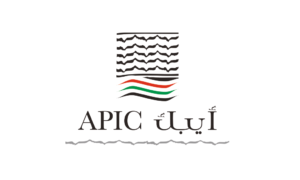Communicators have had to keep one step ahead of an ever-moving situation since the COVID-19 outbreak, playing a key role in supporting and reassuring employees, customers, and communities as they get to grips with the ongoing challenges of the pandemic. The Omicron wave has shown us how the dynamic nature of the virus and a new variant of concern (VOC) can bring about a sudden shift in trajectory that necessitates a change in working practices and other preventative measures.
During this phase of transformation, businesses need to implement structure and responsive multi-channel communication strategies that consider each stage of the crisis and adapt to market changes. All countries around the world have developed response plans to tackle the COVID-19 pandemic and sustainable economic recovery. Saudi Arabia and the UAE have been ranked first and second globally as the best places to be during the pandemic. The Kingdom’s high vaccination rate and predictions of a strong economic recovery saw it rise 18 places to the No.2 spot in Bloomberg’s COVID Resilience Ranking Report for January.
“COVID-19 is a multifaceted crisis across health, policy, the economy, and geography. Businesses must therefore tailor their communications to what their respective stakeholders are experiencing throughout the different stages of the crisis.” explains Abdulrahman Inayat, Director and Co-Founder of W7Worldwide. “Being able to respond, pivot, evolve, and transform based on changing conditions is essential for survival. Changes in business model, working practices, business impact, contingency plans and what companies are doing for society will all be critical factors that can impact their reputation during this current time.”
The report advises that CEOs must take an assertive approach and explore how they can set their business up on the right trajectory for growth. Every crisis has an end, so stay focused on the horizon, future-proofing your business model and helping to define the new tomorrow. This is no longer a reactive crisis response programme, but rather change management to a new status quo. Corporate leadership communication delivered to employees at a regular cadence will provide reassurance about the changing situation.
As soon as a new variant is identified, leaders will need to communicate that they are managing the situation. If a plan gets updated or altered to integrate a new reality, leaders need to clearly describe the changing circumstances and how the updated protocol is designed to adapt to the new normal. To give the sense of control and security people need, communicating a re-opening plan is a continuous undertaking. COVID and its variants are a breeding ground for fear, so leaders and internal communicators need to explain the plan and its contingencies many times across different platforms.
Proactive external and corporate communication strategies can help maintain a level of business continuity, demonstrate a commitment to all stakeholders, earn trust, and strengthen and build relationships during this uncertain time. A brand’s identity needs to be clear and consistent to set itself apart. A broader focus on business purpose is increasingly being taken into consideration by consumers and stakeholders. During this time of massive upheaval, people want to know that businesses and brands have their back.


























